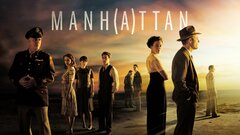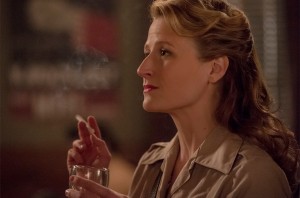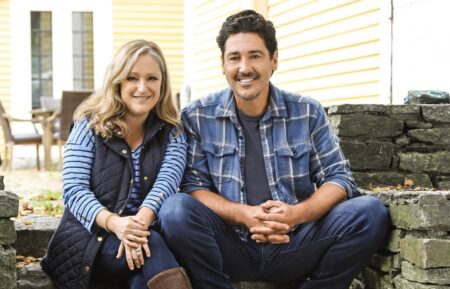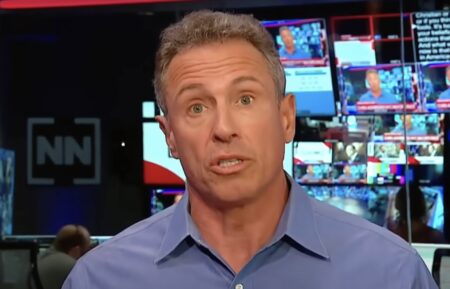‘Manhattan’s New Characters: Season 2 Mixes Fact and Fiction
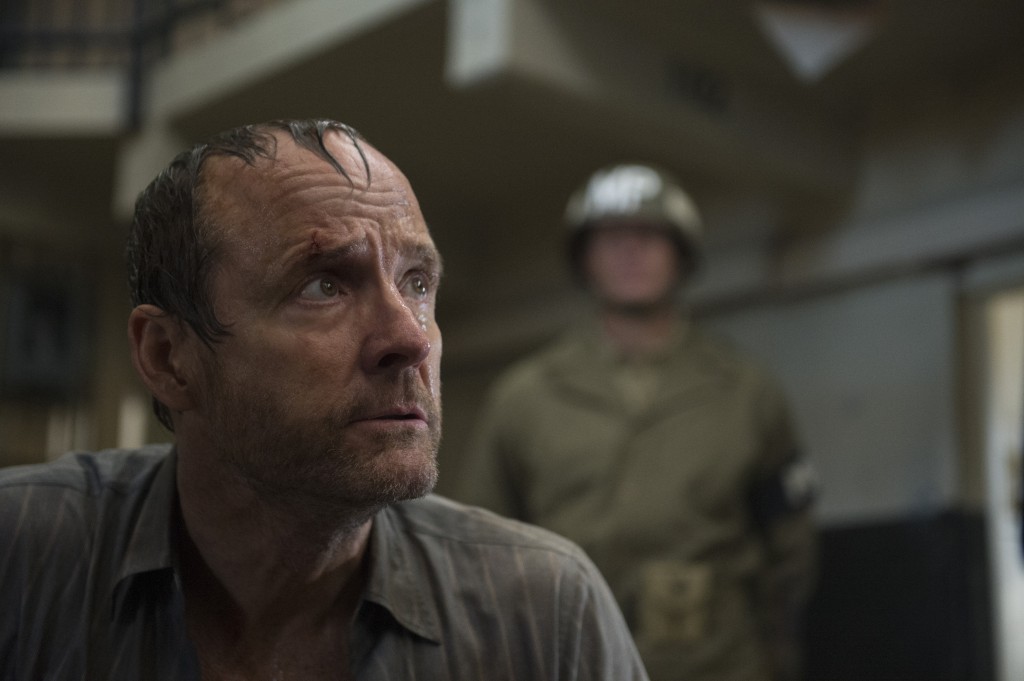
In its first season, WGN’s Manhattan introduced compelling characters that, though rooted in reality, were not based on historical figures. But in Season 2 the writers start to blend truth and fiction by including some very famous Los Alamos residents in the show’s storylines. As the physics team gets closer to the detonation of the first atomic bomb, the most famous man associated with the project, J. Robert Oppenheimer, no longer plays a secondary role in the series—and he’s not the only character that will thrill history buffs.
We talked to series creator Sam Shaw about increasing Oppenheimer’s presence in the second season and the new characters who will be appearing on the journey to the Trinity test site.
We begin the season at the Trinity test site, ready to detonate. Why start at the end?
I think there was a rightness in beginning the story at the end to plant a flag and announce [what] the characters are inexorably moving toward. Those first few minutes of the first episode contain a lot of really complicated and dramatic character stuff that is hiding in plain sight.
In the first season, Oppenheimer is very peripheral, but you don’t shy away from making him almost a main character in the second season. What can you say about his involvement?
Now that Charlie is the nucleus of the Manhattan Project, it became an opportunity for us to write about what it’s [like] to be upper management in this very unusual workplace. What would it be like for Charlie and for the show and for our audience to get glimpses of who Oppenheimer is, as a man, and not just as a myth? There are moments where you get these glimpses, and then there are moments where the door shuts again, and we’re held at bay and don’t really have a sense of what drives him. That was part of it. It’s also just the fact that he’s a really fascinating guy who had some very particular, curious flaws as a human being and as a physicist that we probably wouldn’t have had the audacity to invent, if they didn’t have a basis in history. It became interesting to try and figure out how our characters might interact with that piece of the story.
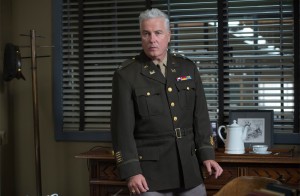 What can we say about Colonel Darrow (William Petersen)?
What can we say about Colonel Darrow (William Petersen)?
Darrow arrives on the scene, and he’s, in his way, a visionary. He’s the first character on our show who sees what the broad strokes of the atomic future for the United States are going to look like. I think he’s somebody that thinks that America’s a force for good in the world, and this bomb is an opportunity for America to export those values overseas. So he becomes, in new ways, a really important engine for a story about what the clash between scientists and the military looks like. And the other thing I can say about him is that as Frank loses faith in this bomb that he’s been building, it was really interesting to write about a character who is totally unequivocal and unapologetic when it comes to the bomb. Someone for whom this project is good. Someone who believes that has great moral underpinnings. Doesn’t feel any sense of ethical reservation. And so that’s sort of part of what he brings to the series.
RELATED: A Look at Manhattan’s Second Season (PHOTOS)
Mamie Gummer also joins the show this season. What can you tell us about her character?
I love Mamie Gummer, she’s so great. She arrives this season as a member of the Women’s Army core and becomes drawn into some of the espionage intrigue in ways that I don’t want to say too much about, except to say that she’s a character whose motives the audience will be debating and questioning right to the end of the season.
What about Neve Campbell’s character?
Neve Campbell plays another historical figure, one of the few in our show. She plays Kitty Oppenheimer, Robert Oppenheimer’s wife, who was a force of nature. She was the first lady of the Manhattan Project, and was probably more feared than loved, but was very brilliant and really wielded a huge amount of social and kind of intellectual power, both over Oppenheimer and over the culture of Los Alamos, itself. As Charlie is inept in this sort of social hierarchy of this place, they find themselves brushing elbows with the Oppenheimers and have some unexpected and dramatic implications for both Charlie, Abby and the Oppenheimers.
Are there other real-life characters to speak of this season?
For the most part, this is a story about our fictional characters, but there are a couple of exciting historical cameos over the course of the season, and our characters get to brush elbows with some of the bold-faced names in history in some very unexpected ways.
We know what happens historically, but you have a story to tell with people you’ve created, and these people seem anxious to foil the plan for the bomb. What are the challenges of merging those two goals creatively?
That’s such a great question. I think that was another reason to begin this story with the end of the story. Look, anybody who Googles the Trinity test will find out pretty quickly, for example, whether it worked or didn’t work. And so we knew it was never going to be available to us, to gin up a lot of dramatic events out of that will it or won’t it question. And so I think that, dramatically, it was fun for us to dispel a little bit of that right out of the gate, to show the audience a glimpse of the monster that we’re going to arrive at by the end of this story. Because it’s not about the outcome in some fundamental ways, or at least the broad strokes history. It’s not a whodunit. It’s sort of a howdunit or a whydunit in a way. Those are the questions or the mysteries at the heart of the story.
Is there any levity in this very serious world?
Absolutely. We’re writing a show about a bunch of geniuses who are inventing the most devastating weapon ever imagined, and so, of course, there are incredibly high, dramatic stakes to the storytelling. But Los Alamos was almost like a college campus. The average age there was 25 or 27 years old. You had a bunch of people living in really close quarters, working really hard, and they also played very hard. It’s always been an aspect of this story that we loved dramatizing. I think people are surprised that there are laughs on our show or think that we are exaggerating the social aspect of life at Los Alamos to try to drum up an audience with sex and soap. But the truth of the matter is like, there’s a lot of sex and soap at Los Alamos, and a lot of levity too. The sort of camaraderie of those characters is part of why we love them, and why we love writing for these actors.
Manhattan, Tuesdays, 9/8c, WGN America
From TV Guide Magazine
How 'Countdown' Recruited Jensen Ackles to Go Full 'Die Hard'
Countdown boss Derek Haas talks creating the character around Ackles, and the cast teases the “Avengers”-like team of the crime thriller. Read the story now on TV Insider.
